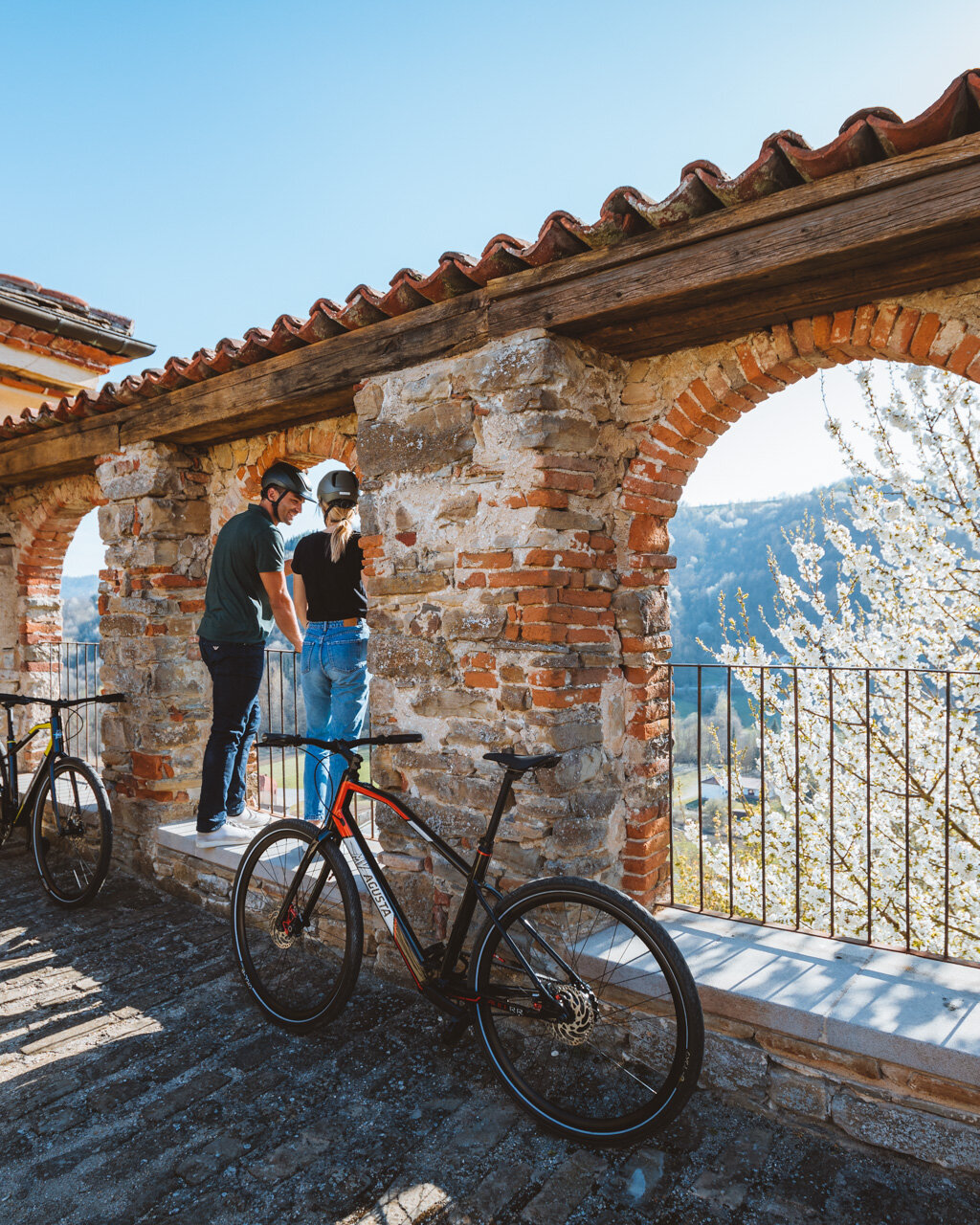At this point, the route begins to ascend, gradually at first and then in a steep zigzag through hillside vineyards along a dusty road in the direction of Casa Natura, which you will reach after passing through a small wooded area. Home of Associazione Canale Ecologia, the building is situated on a plateau and was once the site of a skeet shooting range. It is now equipped with a small kitchen, restrooms, a classroom and is often used by associations and other groups as a meeting point for camping or other outings. There is also a self-serve workshop for cyclists.
Beyond Casa Natura, turn sharply to the left and follow along the S1 trail for a long section along the crest of the hill, through vineyards and woodlands, in the direction of Montà and Cisterna d’Asti. This is the San Nicolao Nature Park, a protected oasis now owned by the nonprofit Associazione Canale Ecologia, which works to maintain the area’s biodiversity for future generations. Continue along the crest until Rocca Tagliata, where you will meet up with “Sentiero del Castagno”. This trail can be followed for a section through town in the direction of Valle del Saretto. Rocca Tagliata, a pleasant hill far from residential areas, was selected as a base camp for the partisans’ 23rd Canale Brigade, an aggregation of the groups from Canale, Magliano Alfieri, Santo Stefano Roero and Vezza d’Alba formed in August of 1944. This area served as the base for incursions against Fascist soldiers crossing through this area and through Cisterna d’Asti and it was here that the precious cargo of one of the Allied Forces’ parachute supply runs was hidden.
From Rocca Tagliata, you can follow the signs for Il Grande Sentiero del Roero (Trail S1) to Cisterna d’Asti, the hilltop village at the end of the Rocche ridge. This is the only municipality of the province of Asti that is a part of the Roero region both geographically and geologically, and it is in a prevalently hilly area featuring woods and vineyards. The village has ancient roots and was once enclosed within walls atop a natural escarpment. It features two main landmarks: its castle, which houses the storage tank (cisterna in Italian) which gave the village its name; and the main church. The oldest section of the castle dates back to the 12th century and features a medieval tower. The castle as it appears today is the result of a work that was done in the late 1500s and in the following century. Today, the castle is home to the Museo Arti e Mestieri di un Tempo (Museum of Ancient Arts and Trades), which houses over 5,000 artifacts from the 17th to the 20th centuries that embody the culture of the Piedmont region arranged in 20 shops that offer a detailed reconstruction of life as it once was.
PLEASE NOTE: Responsibility for the maintenance and practicability of the various trails lies with the municipalities where the routes are located. The Tourist Board, therefore, cannot be held responsible for any inefficiencies, but is willingly available to collect your reports so that they can be forwarded to the authorities concerned.


